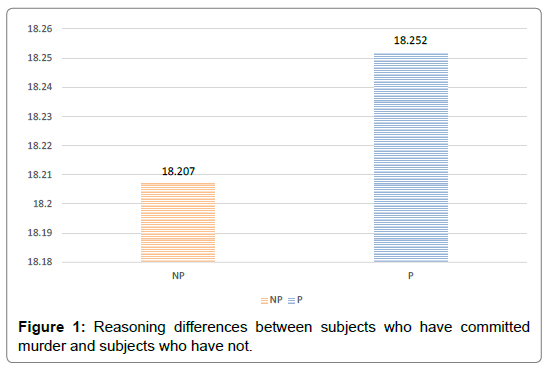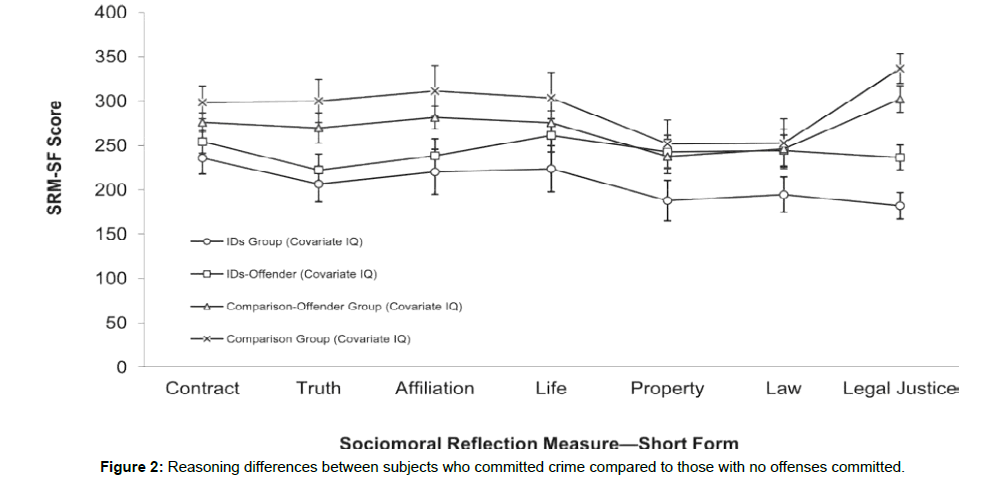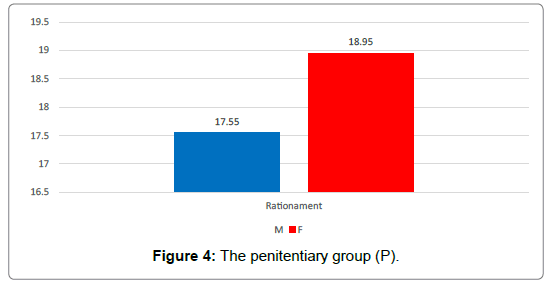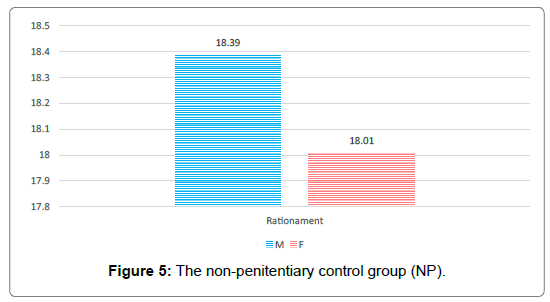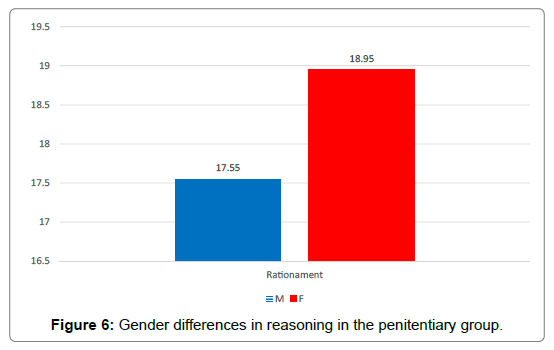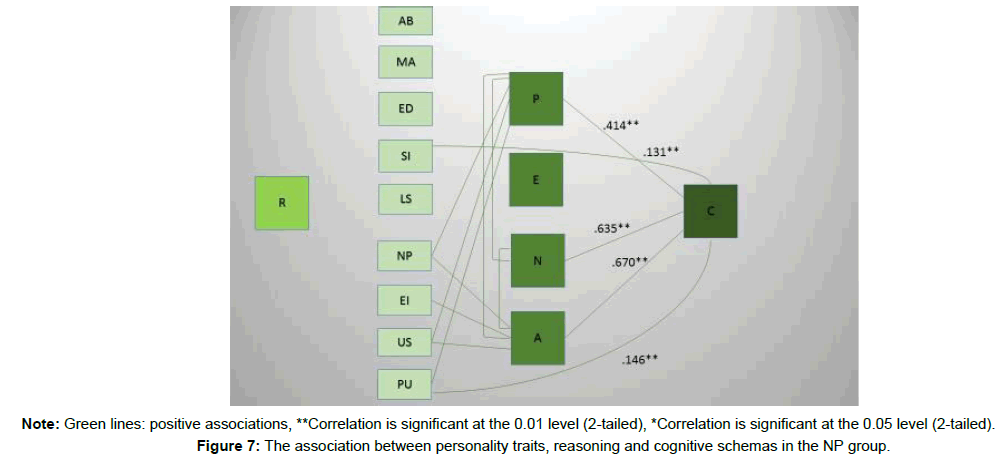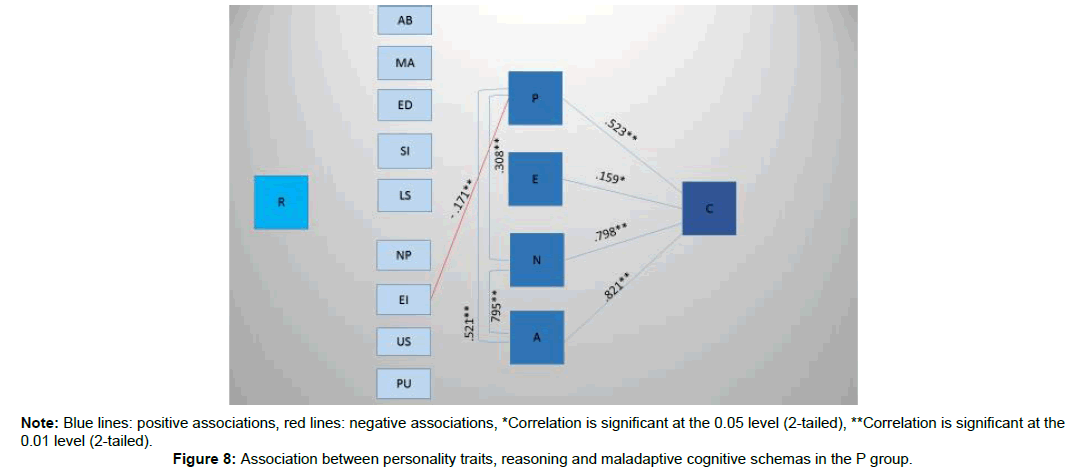Research Article, Int J Ment Health Psychiatry Vol: 4 Issue: 2
The Reasoning Involved in the Decision Making Process of Individuals Who have Committed Murder
Delcea Cristian1*, Alexandra Enache2, Costel Siserman3
1Victor Babes University of Medicine and Pharmacy, Timisoara 300041, Romania
2Victor Babes University of Medicine and Pharmacy, Timisoara, Romania
3Iuliu Hatieganu University of Medicine and Pharmacy, Cluj-Napoca, Romania
*Corresponding Author : Delcea Cristian, PhD
Victor Babes University of Medicine and Pharmacy, Timisoara 300041, Romania
Tel: 0742885979
E-mail: cristian.delcea.cj@gmail.com
Received: March 23, 2018 Accepted: April 09, 2018 Published: April 17, 2018
Citation: Cristian D, Enache A, Siserman C (2018) The Reasoning Involved in the Decision Making Process of Individuals Who have Committed Murder. Int J Ment Health Psychiatry 4:2. doi: 10.4172/2471-4372.1000160
Abstract
This work represents an overview of the theoretical-experimental basis of reasoning, reasoning mediated by the cognitive instruments used in the decision making process, in the case of individuals imprisoned for murder on the one hand, and in the case of individuals who have not committed murder on the other hand. Beginning from the theoretical approach, we will research 492 (N=492) respondents to the study, of which 246 female and 246 male, divided into an imprisoned and a non-imprisoned group. The purpose of this research is to contribute to a better clinical conceptualisation in the case of a target patient suspected of murder, when assessed by a forensic psychiatric committee. In the research, we will analyse individual reasoning differences, reasoning correlations between the penitentiary and nonpenitentiary group. We will also analyse the comparisons between maladaptive cognitive schemas/psychopathological personality traits and reasoning in the two groups, control and experimental.
Keywords: Reasoning; Decision making process; Murder; Cognitive schemas
Introduction
When a criminal thinks in sentences, the succession of his/her cognitions is organised, and the type of organising which is the object of this study manifests when the individual builds reasoning. In such situations, the succession of his/her cognitive processes often takes the form of an inference, in which an assertion corresponds to a statement or a summary which the perpetrator attempts to make, and residual assertions are reasons for the given statement or grounds for a conclusion in reaching a decision [1]. According to Skyrms and Harper [2], the most influential inferences are those with deductive validity, i.e. if one has a true premise, one does not have a false conclusion for the inference, and inductive power is a matter of probability, not certain data. Therefore, when an individual assesses arguments, sometimes he/she may use logical rules, while other times he/she may use heuristics (practical rules which process a sentence’s content, not its logical form), and when one assesses inferences, oftentimes the principles of probabilistic theory are ignored, and the individual will rely on similarity and causal heuristics [3].
In cognitive psychology, [4] two types of reasoning are identified: deductive and inductive. The first refers to the ability to apply general rules to specific life situations in order to identify logical answers [5]. In fact, this type of reasoning involves the ability to establish whether answers to a certain task are plausible and have a syllogistic reasoning. This ability involves the application of general norms to a target-task, not the identification of general rules from decomposed data. An individual uses deductive reasoning in cost-benefit type tasks. This type of reasoning is applied in jobs such as anatomistpathologist, car mechanic, engineer, research analyst or programmer, judge and mathematician [6]. The second type of reasoning refers to the ability to connect distinct data with the purpose of formulating general norms or decisions [7]. The individual seeks possible motives for interactions between things, in order to give a logical explanation for a multitude of phenomena which are seemingly unrelated. The individual describes the most successful general rules and not the formulation of a series of previous norms. What is important is the projection of a test and issuing a hypothesis regarding an event. The applicability of inductive reasoning in an individual is like an exhaustive analysis, and the jobs in which it is mostly encountered are psychologist, medical doctor, statistician, meteorologist, topographer and humanities researcher. Several researchers [8] claim that mental models form the basis of deductive reasoning and continue to claim that mental theories are also used in inductive reasoning, and therefore there is no qualitative difference between the two types of reasoning. Because of this, reasoning was studied at a neurological level as well, where the cerebral areas involved in reasoning were identified in experimental studies involving cerebral scanning. Thus, it was discovered that certain areas of the brain are activated in cognitive task situations, which demonstrates that differences exist between the two types of reasoning [9,10]. Many studies carried out with the help of an MRI [11], have identified from the point of view of reasoning theory certain reasoning patterns in psychopaths, certain areas of the brain becoming visible in situations when the subjects were required to make a decision detrimental to someone else. Other research [12], focused on sexual crime, vandalism, domestic violence and terrorism [13] allowed the formulation of conceptual reasoning models similar to those of individuals who had not committed the crimes of the experimental group. For this reason, there is no research which can reveal individual reasoning differences between individuals who have committed murder and those who have not.
Method and Procedure
Participants
The total study sample consists of 492 (N=492) adult participants. Of the participants, 50% were female and 50% male. Their average age was 34.14 (SD=10.66, Min 18, Max 68), and their average education level was 12 grades/high school (SD=2.01). The participants are classified in two major groups: the penitentiary group (P) consists of 246 (N=246) participants, equally sub-grouped according to gender, while the control group (NP) consists of 246 adult participants (N=246) sub-grouped according to gender. The participants were selected from the National Penitentiary Agency in Romania. And those who did not kill were selected by email, Facebook, and Twitter ads from Romania; In the years 2015-2016.
The penitentiary group (P)
The penitentiary sample (P) consists of 246 (N=246) adult participants. Of them, 50% were female and 50% male. Their average age was 37.32 (SD=9.93, Min 18, Max 68) and their education level was 11 grades (SD=1.82) (Table 1).
| N | Min. | Max. | M. | SD. | |
|---|---|---|---|---|---|
| Age | 246 | 18.00 | 68.00 | 37.3252 | 9.93776 |
| Studies | 246 | 8.00 | 16.00 | 10.9309 | 1.82256 |
Table 1: The composition of the penitentiary group with regard to age and educational level.
The control group (non-penitentiary NP)
The control sample (NP) consists of 246 (N=246) adult participants. Of them, 50% were female and 50% male. Their average age was 30.95 (SD=10.42, Min 18, Max 68) and their educational level 11.63 grades (SD=2.13) (Table 2).
| N | Min. | Max. | M | SD | |
|---|---|---|---|---|---|
| Age | 246 | 18.00 | 68.00 | 30.9553 | 10.42456 |
| Studies | 246 | 8.00 | 16.00 | 11.6301 | 2.13172 |
Table 2: The composition of the non-penitentiary group with regard to age and educational level.
Instruments
In our research we used the Analytical Reasoning questionnaire (ARQ) adapted and scientifically validated on the Romanian population, in order to assess and test reasoning and general cognitive abilities. For this questionnaire, we hold Cognitrom Assessment System (CAS++) license series CX, no. 1724. The rational test analysis allows the assessment of the individual’s ability to find and apply logical rules to solve some reasoning issues. By reasoning it is meant to obtain new information by associating, combining the previous or existing ones. The audience consists of people aged 12 to 67 years of the non-clinical population. The questionnaire can be applied individually or collectively in the form of a paper or paper pen, requiring a 14 min, 7 min for each part of the test. In order to analyze and explain the results, it is necessary for the person who is in charge of the articles to have psychology studies. Questionnaire The reasoning analysis consists of two subscales, corresponding to the two categories of reasoning, inductive and deductive. The reasoning substructure refers to the process by which some general information is obtained from the actual date. To solve some inductive reasoning issues, it is intended to observe a third level:
• Level 1: Creating a mental model based on the characters of the string of letters and images and establishing some relationships between them.
• Level 2: compare the discovered rules and response variants offered.
• Level 3: apply the rules to find the right representation to choose the right answer. Stenberg identified three processes in reasoning: selective selection, selective comparison, selective combination.
For inductive reasoning, the phenomenon of selective comparison is an important role. Thus, subjects have a number of letters or numbers between which a series of relationships can be established. If there are several rules that can be applied, the most specific rule must be applied to solve correctly. As for the elements of the inductive reasoning subchapter of the Judgment Analysis test, these are constituted by geometric lines/letters respecting a number of rules. Subjects will have the task of finding and generalizing these rules in order ultimately to opt for one of the four variants. The design of the evidence takes into account the difficulty and complexity criteria identified on the basis of the element response analysis. These are: number of elements and rules, types of rules and perceptual organization. In the Rational Analysis Analysis, the Rationale A subscale, the complexity of articles increases, therefore, according to the number of elements or rules and the type of organizational perceptions.
The deductive reasoning substructure was created on the basis of mental models. Within the evaluation and testing scale of deductive reasoning, the individual examined presents the sentences in the form of events/phenomena and four deductions, of which he must choose what is necessary from his previous premises.
Procedure
Data processing: Data collection was followed by introducing it into the database. Statistical data processing was carried out using the SPSS software (Statistical Package for the Social Sciences) version 20.0. Apart from descriptive statistics, group comparisons were also performed using the t-test and ANCOVA. The significance threshold was established to be p ≤ 0.05.
Hypothesis: We suppose that subjects who have been imprisoned for murder have different reasoning compared to those who have not committed murder.
The following hypothesis tested reasoning differences between the two groups (P/NP), participants in the penitentiary system and the non-penitentiary control group. In the results of the work, no differences have been identified between the two groups with regard to reasoning, after the age effect was controlled F (1, 492) =.076, p=.782), nor after controlling the effect of the educational level F (1, 492) =.870, p=.351) (Figure 1).
The Figure 1 illustrates similar results, which refers to a cognitive ability rather than a personality trait or decision-making style in the P and NP groups, to identify logical rules and use those logical norms in order to solve various social or relational problems, or other associated activities, as well as to extract correct conclusions starting from various data/information. Performance scores were obtained for the two groups (P/NP), expressed as a gross score, related to a benchmark validated in the Romanian population by Cognitrom Assessment System. Depending on their score, the participants were divided into one of five classes, 1 meaning very low level and 5 being a very good level of analytic reasoning. The participants in the two groups (P/NP) obtained level 4 (good level), which means a better performance than 69% of the Romanian population.
The hypothesis was not confirmed, but the results validate most of the studies [14-17] focused on individual thinking, reasoning and decisional differences. For instance, a study [18] carried out on 80 participants distributed into four groups (a control group with slight developmental intellectual disability who had committed an offence vs. no offence committed and another group with no intellectual disabilities who had committed an offence vs. no offence committed) showed similar scores in reasoning as those obtained by us, but obtained significant scores in differences between control groups and the experimental group with regard to ethics as a mediator in case of criminal offences (Figures 2 and 3).
The Figures 2 and 3 above show significant differences in empathy, cognitive distortions and the moral feature as a personality trait vs. reasoning and intelligence. Similar scores were obtained by both groups in intelligence quotient and reasoning, but scores in the mediating variable of ethics were significantly different between the control and experimental group.
Another study by Johansson and Kerr [19] applied to psychopaths (P) vs. non-psychopaths (NP) obtained different results in terms of the averages of those who obtained high scores on the PCL-R scale and those who obtained lower scores, in individuals who had committed murder vs. subjects who had not. The following dimensions were measured in general cognitive ability: total IQ, verbal sub-scales, reasoning and visual-spatial ability. The psychopath (P) and nonpsychopath (NP) groups were no different with regard to verbal abilities (Ms=4.71 and 4.83 for psychopaths and non- psychopaths, t=.50, p=.61). In reasoning, the following results were obtained: Ms=5.71 and 5.99 psychopaths and non- psychopaths, t=1.28, p=.19. In visual-spatial abilities, the scores were: Ms=5.90 and 6.11 psychopaths and non- psychopaths, t=.76, p=.44, while in total IQ, the scores obtained were Ms=5.61 and 5.98 psychopaths and nonpsychopaths, t=1.58, p=.11. The results above show that there are no significant reasoning results between the psychopath and nonpsychopath groups.
Lynn and Meisenberg studied reasoning and intelligence in 108 world states, among which Romania, both on a clinical and a nonclinical population, from a penitentiary vs. non-penitentiary [20]. Researchers found no significant differences in reasoning, but they have identified a significant difference in intelligence; using the Raven test, they obtained an average IQ in Romanians (the general population with all its subgroups: clinical vs. non-clinical and penitentiary vs. non-penitentiary) of 91, compared to the population of Hong Kong, for instance, which has an IQ of 108. Similar IQ averages to those in Romania were found in Lithuania, Macedonia, Cyprus and Thailand.
Results in Reasoning Differences
As can be seen from the diagrams below, in the experimental group (P), women have a higher level than men, and the difference is statistically significant. However, according to the benchmarks of the Analytic Reasoning test, used in this research, both gender sub-groups in the experimental group (P) fall under “good” and “very good” levels. Therefore, there are differences between the two gender groups in the experimental group (P), but the two subgroups have similar scores from the point of view of cognitive analysis and/ or cognitive processes when taking a decision. In the control group (NP), there are no gender differences in reasoning, both subgroups in the NP group having obtained similar scores. As per the benchmark of the Analytic Reasoning questionnaire, the two gender subgroups of the P group fall into the range of good and very good levels, similarly to those in the control group (NP), with regard to both the masculine and feminine subgroups (Figure 4).
Analysis with the ANCOVA statistical test showed that there are no significant reasoning differences between women and men in the non-penitentiary group, after isolating the effect of age F (1,243) =1.172, p=.280). The Figure 5 below illustrates the results.
The Figure 5 reveals a non-significant difference between the two masculine and feminine subgroups in the NP group. According to Rosén [21], research on non-clinical samples and on gender differences lead to a conclusion that can be confirmed by this research, namely that there are no significant differences between gender groups with regard to analytic reasoning. For instance, the author emphasised that no differences were found in cognitive, hierarchical and analytical complexity, while women had higher scores than males in general information ability and crystallised intelligence. On the other hand, men obtained higher scores in analysing visual information and on more metacognitive dimensions than women. Halpern FD [22] argued that there are no major gender-related differences in reasoning nor are there differences in global intelligence or general cognitive abilities (such as mathematic and spatial calculations, numeric, verbal, technical and time-space abilities etc.). The results above show good participation of the two gender subgroups in the non-penitentiary group and a similarity in the scores obtained. Moreover, they show a similarity in the results obtained by the two groups (experimental-P and control-NP), meaning that reasoning does not play a major role in the decision to kill. Both groups obtained good and very good level results in the Analytic Reasoning test, in general cognitive abilities and in mental capacity.
The results show that out of the penitentiary group, women (M=18.95, SD=2.61) have a significantly higher level of reasoning (t=-4.417, p=.00) than men (M=17.55, SD=2.34). The Table 3 and Figure 6 below illustrate the results.
| Sex | N | M | SD | t | Df | P | |
|---|---|---|---|---|---|---|---|
| Rationality | M | 123 | 17.5528 | 2.34417 | -4.417 | 241.157 | .000 |
| F | 123 | 18.9512 | 2.61413 |
Table 3: Reasoning differences between men and women in the penitentiary group (independent samples t-test results).
The Figure 6 above shows the score obtained by imprisoned women as being 1.4p higher than that obtained by the men in the same P group, thus confirming our hypothesis. The score average of the Analytical Reasoning test was level 4 and 5, i.e. both P subgroups obtained good and very good level results in the Analytic reasoning test, which means a better performance than 69.1% of the Romanian population. For instance, for N 246 participants (P), males and females, with an average age of 37 and an average educational level of 11 grades, as per the benchmark of the Analytic Reasoning test, validated on the Romanian population, the results were as follows: level 4 (females aged 33-17) with scores between 14 and 20 points, level 5 (males aged 33-37) with scores between 17-24 points. Therefore, there are differences in the results obtained, but as per test benchmarks, both males and females in the experimental group (P) have a good or very good level of analytic reasoning. Moreover, the results in the Analytic Reasoning tests are supported by other similar research and other studies focused on various types of reasoning (numeric, spatial, logical and verbal) in the two subgroups of the P group, thus reinforcing the idea of similarity (Table 4).
| 1 | 2 | 3 | 4 | 5 | 6 | 7 | 8 | 9 | 10 | 11 | 12 | ||
|---|---|---|---|---|---|---|---|---|---|---|---|---|---|
| 1.P | r | - | |||||||||||
| 2.E | r | .091 | - | ||||||||||
| 3.N | r | .476** | .089 | - | |||||||||
| 4.A | r | .575** | -.008 | .647** | - | ||||||||
| 5.C | r | .414** | .111 | .635** | .670** | - | |||||||
| 6.Rationality | r | -.049 | .021 | -.066 | .028 | -.078 | - | ||||||
| 7.AB | r | .072 | -.052 | -.029 | -.017 | .049 | -.035 | - | |||||
| 8.MA | r | .093 | -.011 | .013 | .043 | .095 | -.002 | .798** | - | ||||
| 9.ED | r | .067 | -.057 | -.052 | -.046 | .037 | .020 | .729** | .601** | - | |||
| 10.SI | r | .119 | -.029 | .065 | .126* | .131* | .103 | .550** | .641** | .255** | - | ||
| 11.LS | r | .098 | -.031 | -.002 | .065 | .048 | .065 | .142* | .220** | -.047 | .418** | - | |
| 12.NP | r | .127* | -.056 | .036 | .138* | .060 | .088 | .074 | .137* | - | .528** | .303** | - |
| 13.EI | r | .108 | -.022 | .068 | .200** | .039 | .130* | -.164** | -.038 | -.413** | .459** | .379** | .803** |
| 14.US | r | .130* | .001 | .062 | .207** | .038 | .109 | -.174** | -.054 | -.436** | .423** | .368** | .772** |
| 15.PU | r | .154* | -.014 | .062 | .118 | .146* | .004 | .276** | .359** | .127* | .413** | .167** | .663** |
| N | 246 | 246 | 246 | 246 | 246 | 246 | 246 | 246 | 246 | 246 | 246 | 246 |
Table 4: The association between personality traits, reasoning and cognitive schemas in the NP group.
Association results in reasoning, personality traits and cognitive schemas
A primary analysis on the entire non-penitentiary sample (n=246) revealed several association tendencies between criminality and other personality traits, reasoning and cognitive schemas. The results show a strong positive association between criminality as a personality trait and psychoticism (r=.414**), neuroticism (r=.635**) and addiction (r=.670**). Another association was found between C (criminality) and SI (social isolation) (r=.131*) and PU (punishment) (r=.146*), the associations being positive, but very weak. The model is graphically represented in the Figure 7 below.
A primary analysis of the entire penitentiary group (n=246) revealed several association tendencies between criminality and other personality traits, reasoning and maladaptive cognitive schemas (Table 5). The results show a strong positive association between criminality as a personality trait and psychoticism (r=.523**), neuroticism (.795**) and addiction (.821**) and a weaker association between criminality and extroversion (.159*). We also noted an association between psychoticism and neuroticism (r=.308**) and addiction (r=.521**), as well as between neuroticism and addiction (r=.795**). Of all the maladaptive cognitive schemas in the penitentiary group, an association was found only between EI (emotional inhibition) and psychoticism (r=-.171**). This association is reversed, i.e. the higher the level of emotional inhibition, the lower the level of psychoticism. No significant association results were found with reasoning. The model is graphically represented in the Figure 8 below.
| 1 | 2 | 3 | 4 | 5 | 6 | 7 | 8 | 9 | ||
|---|---|---|---|---|---|---|---|---|---|---|
| 1.P | r | - | ||||||||
| 2.E | r | -.013 | - | |||||||
| 3.N | r | .308** | .056 | - | ||||||
| 4.A | r | .521** | -.072 | .795** | - | |||||
| 5.C | r | .523** | .159* | .798** | .821** | - | ||||
| 6.Rationality | r | -.021 | -.056 | .027 | .054 | .041 | - | |||
| 7.AB | r | -.124 | .032 | .087 | .021 | .067 | .002 | - | ||
| 8.MA | r | -.101 | .114 | .042 | -.014 | .030 | .058 | .634** | - | |
| 9.ED | r | -.093 | .048 | .123 | .068 | .091 | -.053 | .728** | .622** | - |
| 10.SI | r | -.082 | .032 | -.016 | -.063 | -.077 | .011 | .561** | .631** | .59** |
| 11.LS | r | -.051 | .045 | -.025 | -.063 | -.007 | -.087 | .487** | .352** | .43** |
| 12.NP | r | -.100 | .092 | -.009 | -.002 | -.010 | .058 | .612** | .675** | .61** |
| 13.EI | r | -.171** | .038 | -.013 | -.039 | -.070 | .020 | .400** | .419** | .41** |
| 14.US | r | -.061 | .108 | -.035 | -.007 | -.013 | -.014 | .243** | .283** | .19** |
| 15.PU | r | -.105 | .108 | .038 | -.033 | .008 | .057 | -.594** | .639** | .59** |
| N | 246 | 246 | 246 | 246 | 246 | 246 | 246 | 246 | 246 |
Table 5: Association between personality traits, reasoning and cognitive schemas in the penitentiary group.
Discussions and Conclusions
This research aimed to emphasise the role of decisional processes in murder, mediated by reasoning, by psychopathological personality traits and by early maladaptive cognitive schemas in both male and female individuals in a penitentiary and non-penitentiary setting. The results of the research revealed the following data: our hypothesis was not confirmed, meaning that no major differences in analytic reasoning were found between the experimental P group and the control NP group.
The fact that the hypothesis was not confirmed can lead to the conclusion that reasoning, intelligence and general cognitive ability (numerical, spatial, technical or verbal abilities) do not correlate and cannot be associated with psychopathological personality traits or with early maladaptive cognitive schemas which could mediate a maladaptive decision in case of homicide. The global study results did not reveal any correlation, mediation, direct and/or indirect association with analytic reasoning which would facilitate a decision to kill or to commit a similar crime. Numerous studies on murder have emphasised the same results. If one is to take into account Kahneman’s theory, which refers to the fact that human decisions and erroneous regardless of being positive or negative, corroborated with the results of this research, one could reach the conclusion that the predictors of criminality are maladaptive cognitive schemas and personality traits rather than reasoning, and that decisions are mediated by these schemas and traits.
Even though this study aimed to assess a wider range of variables which could play an important part in decision making and criminality (personality traits, reasoning, cognitive schemas and other associated factors), as is the case of any research, this study is not free of limitations and data errors. We can summarise the most important limitations of this research as follows: a major constraint was the small number of participants, the sample being a specific group. Another source of distortions was self-reporting data; another limitation would be that the study sample was highly heterogeneous, so that variables which might have had a moderation or mediation effect could only be controlled with difficulty.
In conclusion, one must proceed with caution when interpreting these results, due to the fact that a relatively small sample was used, and the differences between averages are modest, even if they are significant. The association between variables is of average strength and the assessed factors did not completely explain the variation of independent variables; thus, the results are potentially only statistical artefacts. Future studies which would mitigate such limitations could offer more data related to the topic under investigation. New research directions in investigating the decision making processes involved in murder should focus on: creating new, much more predictable and accurate assessment and testing instruments (based on artificial intelligence, biofeedback and virtual reality); discriminating between decision making styles and decision making abilities in individuals who have committed murder; discriminating between emotional intelligence and cognitive intelligence in individuals who have committed murder; discriminating between conditioned and unconditioned cognitive schemas in individuals who have committed murder.
All these research suggestions can bring scientifically validated contributions, for a much more advanced version of psychiatric forensic profiling of individuals who have committed murder or other associated crimes. Moreover, these recommendations can bring new discoveries regarding the goals and motivations underlining the decisions of individuals who have committed murder and can also assist psychiatrists and psychologists in accurately and quickly identifying maladaptive patterns and antisocial behaviours.
References
- Dolovich S, Natapoff A (2017) The new criminal justice thinking. NYU Press, USA.
- Skyrms B, Harper LW (2013) Causation, chance and credence: Proceedings of the Irvine conference on probability and causation (1st edn), Springer, Netherlands.
- Belohlavek P (2015) Strategic thinking. Unicist Theory: The nature of things. The Unicist Research Institute, Slovakia.
- Sternberg JR, Sternberg K (2016) Cognitive psychology, Wadsworth Publishing, USA.
- Cole BC (2015) Deductive reasoning exercises for attention and executive functions: real-life problem solving. Plural Publishing, Inc., USA.
- Sofo F, Colapinto C (2013) Adaptive decision making and intellectual Styles, (1st edn) SpringerBriefs in Psychology, New York, USA.
- Weber E, Wouters D, Meheus J (2014) Logic, reasoning, and rationality, In: Logic, Argumentation & Reasoning, Springer, Netherlands.
- Gigerenzer G (2015) Simply rational: Decision making in the real world. Oxford University Press, New York, USA.
- Eagleman D (2017) The brain: The story of you. Vintage; Reprint edition. 2017.
- Caroline Leaf C (2015) Switch on your brain: The key to peak happiness, thinking, and health. (reprint edn) Baker Books, Michigan, USA.
- Haycock AD (2015) Murderous minds: Exploring the criminal psychopathic brain: Neurological imaging and the manifestation of evil. Cherry Hill Publishing, LLC, Ramona, USA.
- Holmes TS, Holmes MR (2008) Sex crimes: Patterns and behavior (3rd edn) SAGE Publications, USA.
- Toney SM (2013) Terrorist leader profiles and comparative behavioral analysis: Abdullaah Yusuf Azzam, Abdelmalek Droukdel, Osama bin Laden, Dokku Umarov Abu Uthman and Ayman al-Zawahiri. CreateSpace Independent Publishing Platform, USA.
- Miclea M (2009) Rationamentul analitic in Aptitudini cognitive, Cognitrom & Ed. ASCR, Cluj-Napoca, Romania.
- Stanovich EK, West FR, Toplak EM (2016) The rationality quotient: Toward a test of rational thinking. The MIT Press, USA.
- Baron J (2005) Rationality and intelligence. Cambridge University Press, USA.
- Buss MD, Hawley HP (2010) The evolution of personality and individual differences. Oxford University Press,USA.
- Langdon PE, Murphy GH, Clare IC, Steverson T, Palmer EJ (2011) Relationships among moral reasoning, empathy, and distorted cognitions in men with intellectual disabilities and a history of criminal offending. Am J Intellect Dev Disabil 116: 438-456.
- Johansson P, Kerr M (2005) Psychopathy and intelligence: A second Look. J Pers Disord 19: 357-369.
- Lynn R, Meisenberg G (2010) National IQs calculated and validated for 108 nations. Intelligence 38: 353-360.
- Halpern FD (2011) Sex differences in cognitive abilities: 4th Edition. Psychology Press, USA.
- Freeman N (1999) Constructive thinking and early maladaptive schemas as predictors of interpersonal adjustment and marital satisfaction. Diss Abstr Int 59: 9B.
 Spanish
Spanish  Chinese
Chinese  Russian
Russian  German
German  French
French  Japanese
Japanese  Portuguese
Portuguese  Hindi
Hindi 